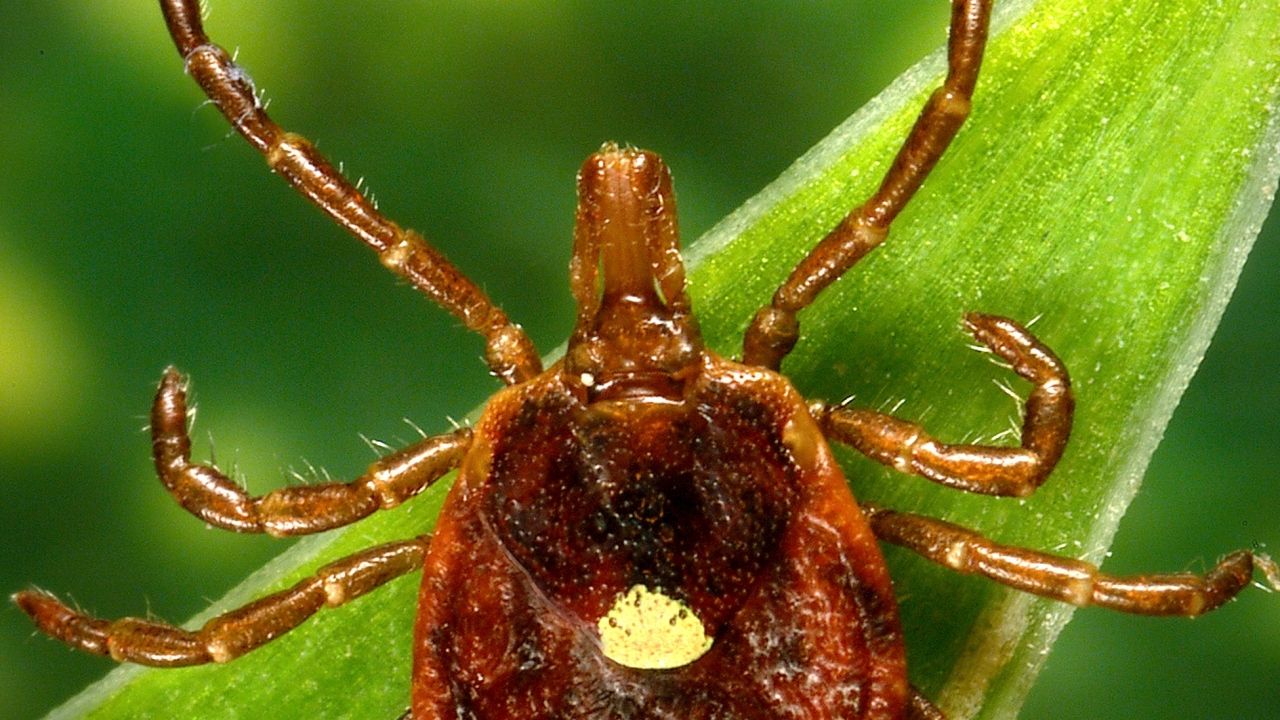Rare tick disease confirmed in Kansas resident
This undated photo provided by the U.S. Centers for Disease Control and Prevention (CDC) shows a female lone star tick. (James Gathany/CDC via AP)
CRAWFORD COUNTY (KSNT) – Health officials found a case of a rare tickborne illness in a resident of Crawford County.
The Kansas Department of Health and Environment (KDHE) said in a press release that a Crawford County resident was diagnosed in late May 2023 with Heartland Virus Disease. Further testing of the resident was coordinated with the Centers for Disease Control and Prevention (CDC).
The KDHE says this is the first case of Heartland in Crawford County and only the third case identified in Kansas since the virus was discovered in northwest Missouri in 2009. The last two cases were found in Miami County in 2015 and Anderson County in 2018. To date, there have been more than 50 cases of Heartland diagnosed across areas of the Midwest and the Southern U.S.
“We’re entering the time of year when we start to receive a lot of complaints about ticks on animals and in the environment and questions regarding tick bites and tickborne diseases in people. People must take the risk of tickborne disease seriously and take personal protective measures for themselves and their pets to reduce their chance of acquiring a tickborne illness,” said Dr. Erin Petro, DVM, MPH, KDHE public health veterinarian. “While Heartland and other tickborne viruses like Bourbon virus are rare, they can lead to severe illness and even death.”
The KDHE says the virus is transmitted by the bite of an infected Lone Star Tick, a common variety of tick in Kansas active from May to August. Symptoms of Heartland are vague and include fever, fatigue, muscle or joint pain, headache and occasionally a rash.
The discovery of this case of Heartland should serve as a reminder to take precautions when taking part in outdoor activities, according to the KDHE. Ticks are usually found at the edge of trails, on tall grasses in wooded, shady areas. You can minimize your chances of contracting a tickborne disease with these steps:
Wear long pants with socks tucked into pants and long sleeves when doing yardwork, hiking, camping or recreating in areas where ticks may be found.
After being outdoors in tick habitats, take a shower to help wash off unattached ticks and identify any attached ticks. Always perform a thorough tick check after being outdoors.
Reduce tick habitats in your yard by clearing brush, leaf litter and tall grasses around your home and at the edge of your lawn.
Apply an EPA-approved repellent, such as DEET, picaridin, or oil of lemon eucalyptus, when enjoying the outdoors.
If hunting or camping, consider treating gear and clothing with permethrin; always follow label directions for safe application of permethrin.
Aside from Heartland, ticks are also known to spread Lyme disease, babesiosis, anaplasmosis and Powassan virus disease. In some cases, ticks can bring about lifelong illness for some people.
More information about the Heartland Virus Disease can be found on the CDC’s website by clicking here.
Source: KSNT News


